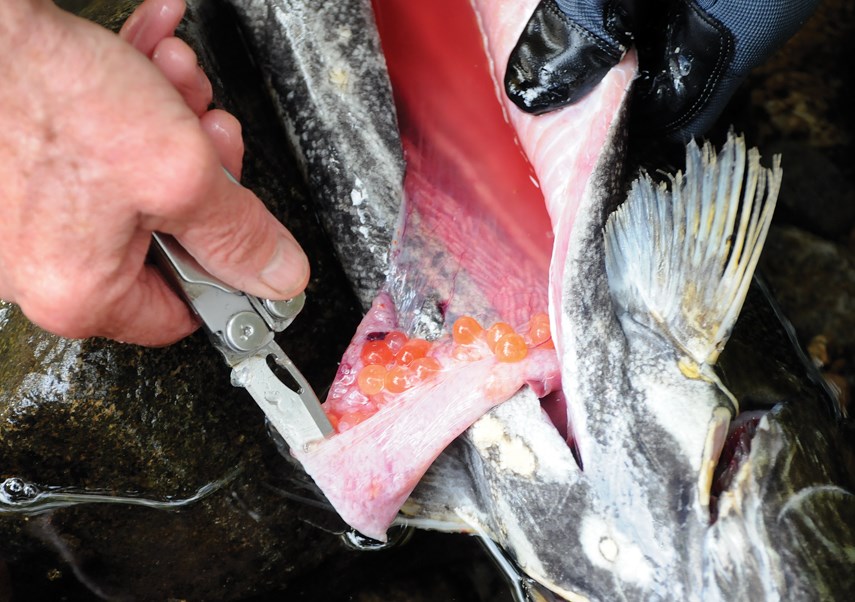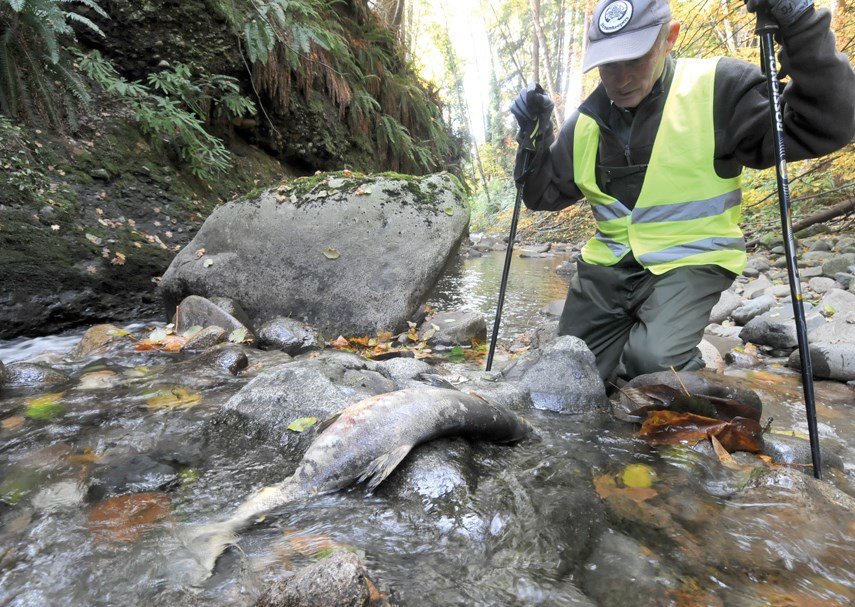After three years of will-they-or-won’t-they drama, the West Vancouver Streamkeepers Society is toasting the return of a very special run of chinook salmon.
Volunteers with the stewardship group have been counting numerous chinooks in Brothers Creek, a tributary of the Capilano River that has not been known as a chinook habitat in recent memory.
“For us, it’s a celebration. It’s just fantastic to think your dreams are fulfilled,” said John Barker, society president.
In the fall of 2014, heavy rains triggered a series of landslides into the Capilano Reservoir that caused heavy turbidity down the Capilano River just as the fall chinook were returning to spawn. Finding the Capilano unsuitable, the fish made the choice to hang a left at Brothers Creek, catching the streamkeepers by surprise.
The group has been doing work on Brothers Creek since the 1990s, including installing baffles on culverts to allow returning pink and chum salmon to get north of the Upper Levels Highway.
The streamkeepers have had to wait through the chinook’s three-year life cycle to see if enough of them successfully spawned and survived to maturity before returning to their home waters.
“Well it’s apparent that they did. The numbers are still small but it’s big enough to say this fits the hope and the expectations,” Barker said, calling it a “small miracle of nature.”
During a visit to the creek on Tuesday, Barker found a dead female chinook on the bank. After examining the carcass, he confirmed the female had already spawned, giving hope for yet another generation of Brothers Creek chinook.

“That was very exciting to see because that means we’re on track to maybe sustain this run and have another return here in three years’ time,” he said.
Barker said it was validating to see some good news for the species that faces stresses at every phase of their life cycle.
“You think about all the challenges salmon have with urbanization, the demands on them, the pollution – all kinds of issues that can crop up. Well the reality is, if we lose our streams, we’re out of business. Salmon have got to have fresh water to spawn. They’ve got to have habitat. All our work is about maintaining access for fish, allowing them to get as far up the watershed as they want to go,” he said.
“At the end of the day, then it’s up to the fish.”
The Brothers Creeks chinooks are likely descendents of fish from the Capilano River Hatchery, which is operated by the federal Department of Fisheries and Oceans.
When they returned in 2014, they were also spotted spawning in another tributary of the Capilano, Hadden Creek. This year’s relatively dry fall, however, has meant the water levels are too low in Hadden Creek for any salmon to spawn, Barker said.
“It’s flowing just a couple of inches high. It’s not good at all. We need more water,” he said.



